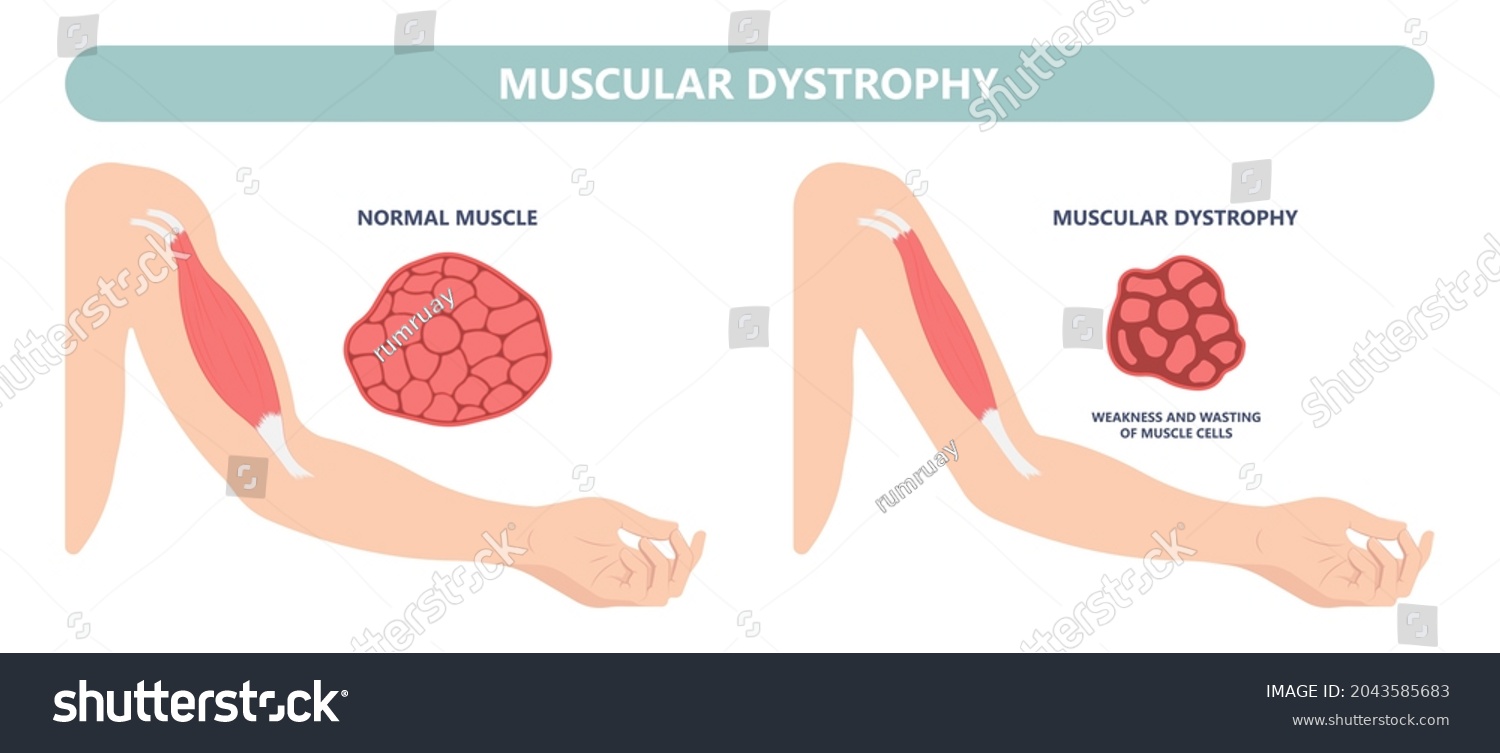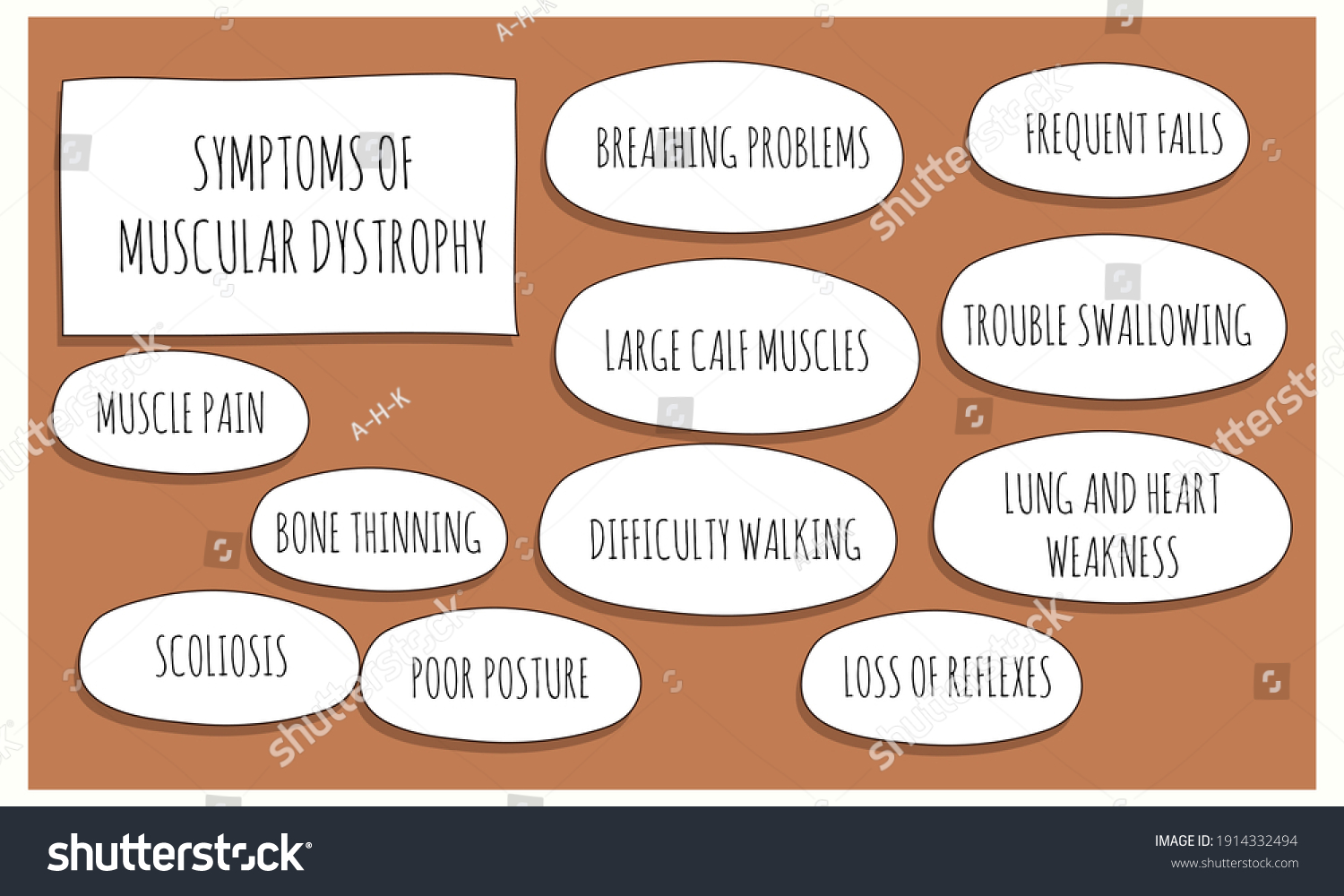Introduction
Muscular dystrophy is a type of debilitating genetic condition that affects millions of people worldwide. It causes progressive weakness and degeneration of skeletal muscles, leading to disability and, in some cases, premature death this includes many disorders. This condition can occur at any age, but it usually manifests in childhood. The severity of the symptoms can vary widely, depending on the type of muscular dystrophy and the age at which it develops. The main cause of muscle weakness and damage due to shortfall or absence of protein dystrophin. This dystrophin is essential in different muscle functions.

Symptoms of Muscular Dystrophy
Common symptoms include:
- Progressive muscle weakness and degeneration
- Difficulty in walking and running
- Frequent falls
- Trouble standing up from a sitting position
- Difficulty in breathing or swallowing
- Scoliosis
- Muscle wasting
- Abnormal gait
- Enlarged calves
Types of Muscular Dystrophy
Some of the most common types include:
Duchenne Muscular Dystrophy (DMD)
One of the most frequent muscular dystrophies is Duchenne muscular dystrophy. It primarily affects boys as opposed to girls. The affected age group ranges from 2 to 5 years. The injured toddler has difficulty walking, running, and jumping. When the condition progresses, it may also impact the lungs and heart.
Becker Muscular Dystrophy (BMD)
It is the most frequent kind of muscular dystrophy after Duchenne muscular dystrophy. BMD is most frequent in adolescents, but it can occur at any age between 5 and 60 years. Men are more likely than women to be affected by Becker muscular dystrophy. This condition mostly affects the thigh, shoulder, and hip muscles, although it can also damage the heart.
Limb-Girdle Muscular Dystrophy (LGMD)
It affects all age groups, and people. The hip and shoulder muscles are affected by this disease.
Myotonic dystrophy
Individuals suffering from myotonic dystrophy are finding it hard to relax their muscles. As the diseases progress, it affects the heart and lungs. This disease occurs in adults of European descent.
Facioscapulohumeral Muscular Dystrophy (FSHD)
This kind of muscular dystrophy occurs before the age of twenty. Facioscapulohumeral muscular dystrophy primarily affects the upper arm, shoulder blade, and face muscles.
Oculopharyngeal muscular dystrophy (OPMD)
It mainly affected the throat and ocular muscles. As a result, a person experiences dysphagia (difficulties swallowing) and ptosis (drooping of eyelids).
Emery Dreiffus muscular dystrophy (EDMD)
Emery Dreiffus muscular dystrophy is primarily a childhood disease. Within the first ten years of life, symptoms such as weak shoulder, upper arm, and calf muscles occur. This condition also has an impact on the heart.
Muscular dystrophy causes
Muscular dystrophy occurs due to genetic alterations that interfere with the generation of proteins required for muscle growth and maintenance. These mutations can be inherited or occur naturally.

Treatment
Treatments can help to improve the quality of life. These treatments include:
- Physical therapy to maintain muscle strength and range of motion
- Occupational therapy to maintain independence in daily activities
- Medications to manage symptoms such as pain, inflammation, and breathing difficulties
- Surgery to correct complications such as scoliosis
- Assistive devices such as braces, walkers, and wheelchairs to improve mobility
- Gene therapy, which is an experimental treatment that aims to correct the genetic mutations that cause muscular dystrophy
Conclusion
Muscular dystrophy is characterized by muscular degeneration and weakness. The primary cause of muscular weakening and injury is a lack or absence of the protein dystrophin. As a result, the participants experienced difficulties waking up, swallowing, muscle coordination, and so on. Muscular dystrophy is a rare illness that typically runs in families. A child with muscular dropsy may inherit from his or her parents mutated genes that cause muscular dystrophy. Adult carriers can sometimes convey the suppressed genes of muscular dropsy to their progeny.
Frequently Asked Questions
1. Can muscular dystrophy be prevented?
There is no known way to prevent muscular dystrophy, as it is a genetic condition.
2. How muscular dystrophy can be diagnosed?
Muscular dystrophy can be diagnosed through a combination of medical and genetic tests. The process usually involves the following steps:
- Physical examination
- Family history
- Blood tests
- Electromyogram (EMG)
- Muscle biopsy
- Genetic testing
3. Does aging make muscular dystrophy worse?
Since MD is progressive, difficulties deteriorate over time. Muscle weakness across the body can cause heart and respiratory issues in DMD children and adolescents.